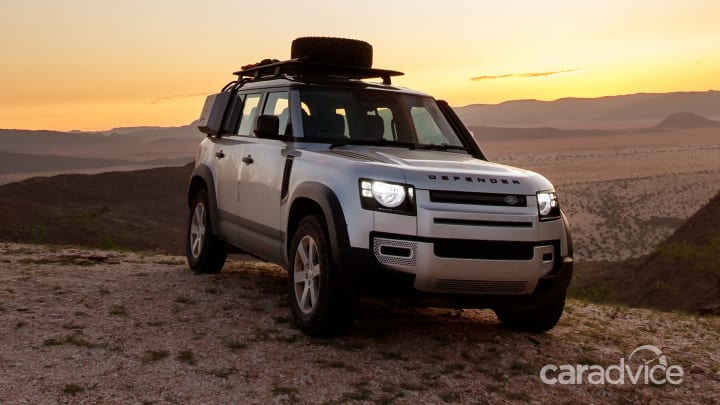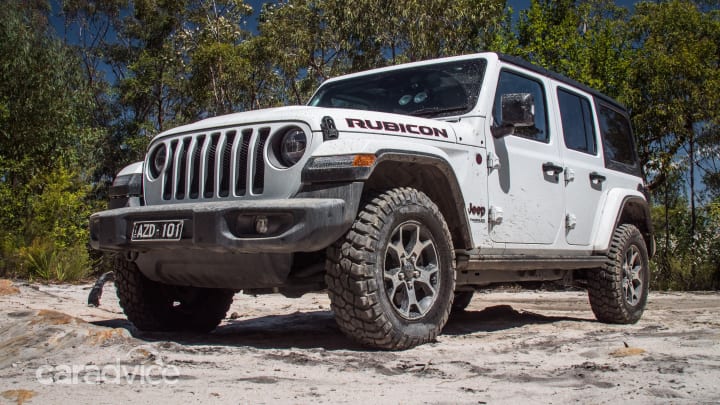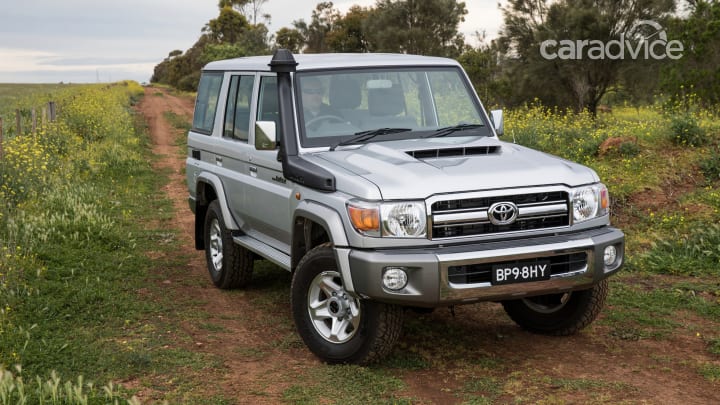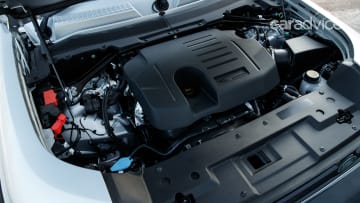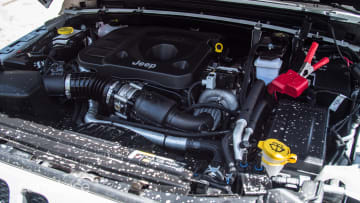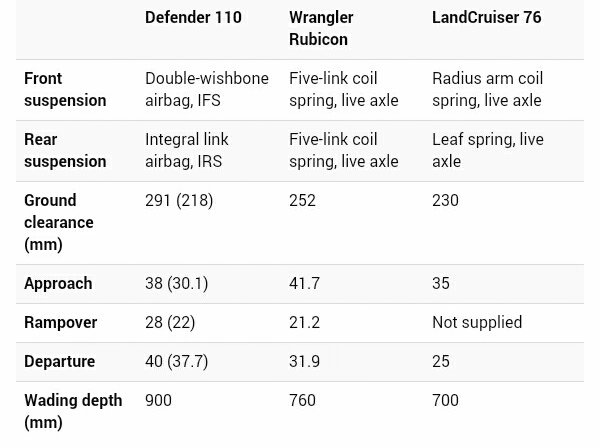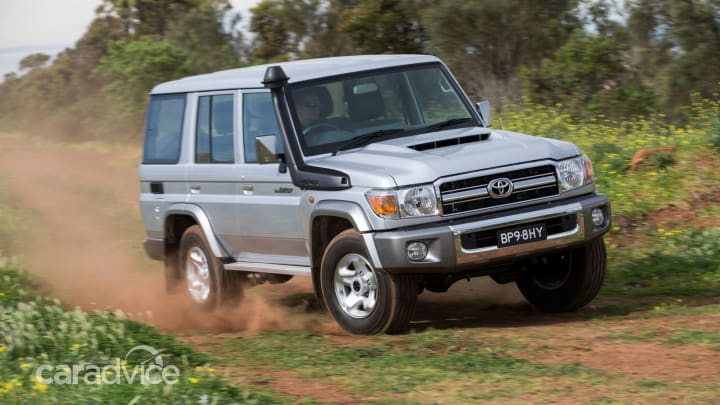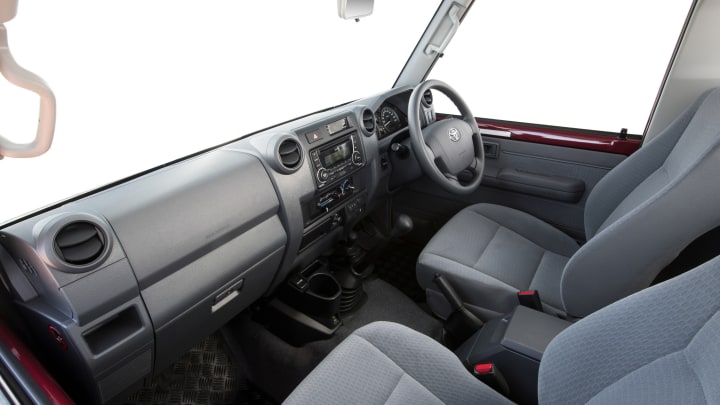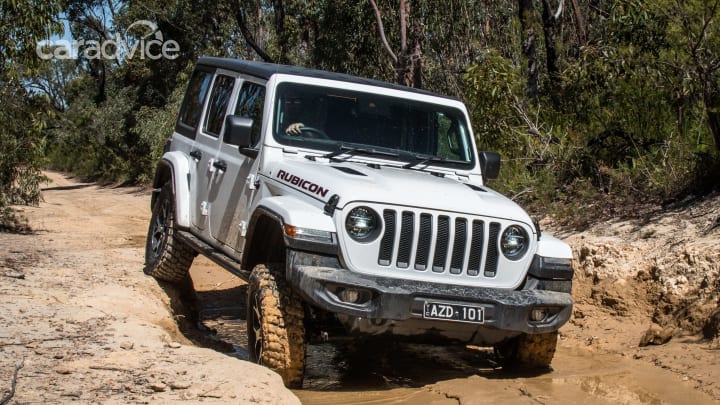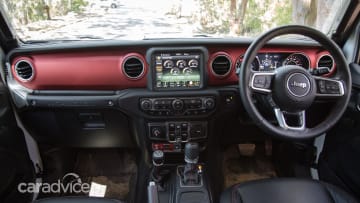How will Land Rover& #39;s new and re-imagined Defender take on two of its competitive and history-steeped 4X4 wagons? Jeep& #39;s Wrangler Rubicon and Toyota& #39;s Land Cruiser 76 Series. Words & Photography by @car_advice
"While there’s also a powerful inline-six petrol engine available, there’s a punchy 2.0-litre diesel in the new Defender that we like for an off-roading 4WD. We prefer the superior fuel range overall, 18-inch steel wheels and the low-down torque on offer."
It’s Land Rover’s new-generation ‘Ingenium’ diesel engine, which is found in a huge variety of JLR vehicles. It’s thoroughly modern, with an integrated exhaust manifold, aluminium alloy block (with iron cylinder liners) & a design to reduce internal friction as much as possible.
The diesel engine makes 430Nm at 1400rpm, and either 197Nm in base D200 spec or 237hp in the more powerful D240, both delivering peak power at the same 4000rpm.
If you want more power, however, the mild-hybrid 3.0-litre petrol engine makes a massive 394hp at 6500rpm and 550Nm at 2000–5000rpm, thanks to turbocharging and an electric supercharger that’s powered by the 48V mild hybrid system.
For the first time, the Rubicon can now be had with a diesel engine behind those iconic seven slots. It’s a Fiat ‘Multijet II’ engine, with 2.1 litres& #39; worth of turbocharged capacity (despite being claimed as a 2.2-litre) that makes 197hp at 3500rpm and 450Nm at 2000rpm.
Both engines run through an eight-speed automatic gearbox, with a lever-operated part-time 4WD system.
Toyota’s Land Cruiser has only one choice of engine and gearbox, which has been around since 2007: a mighty 4.5-litre turbocharged diesel V8, which makes a not-so-mighty 202hp at 3400rpm and 430Nm at 1200–3200rpm.
The numbers are relatively humble, but that torque spread starts low, and is virtually everywhere in the rev range.
Ground clearance is very important for a 4WD, and often is the difference between getting some getting stuck, and others not. So without further ado, here is a table to compare the all-important numbers.
Adjustable air suspension yields the Defender some impressive numbers – highest numbers shown above are maximum clearances with the suspension raised, numbers in parentheses are at & #39;normal& #39; height.
Want to tow? The Wrangler is worst off, with a 2495kg braked towing capacity for both petrol and diesel power. On the other hand, both the LandCruiser and the Defender will tow the full 3500 kilograms.
Traction systems: There are two distinct schools of thought in this area: new tech and old-school. First, let’s look at the Land Cruiser. With 4x4 engaged and your locker dial twisted to ‘FR.RR’, all four wheels are locked together – no leaking of torque to spinning wheels.
When you don’t have your lockers activated, later-model 70 Series Land Cruisers also benefit from Toyota’s effective off-road traction-control system, which controls wheel spin by using the ABS (Anti-lock braking system).
It& #39;s also got hill-start assist, even though low gearing and a big diesel V8 make it one of the easiest manual-geared vehicles on a steep hill-start.
The Jeep has front and rear lockers, as well, running through a rocker switch that effectively locks all four wheels together; part-time 4WD means there is no centre differential that needs locking.
And also like the Land Cruiser, the Jeep also has an off-road traction-control system that is smartly tuned and fast to react.

 Read on Twitter
Read on Twitter